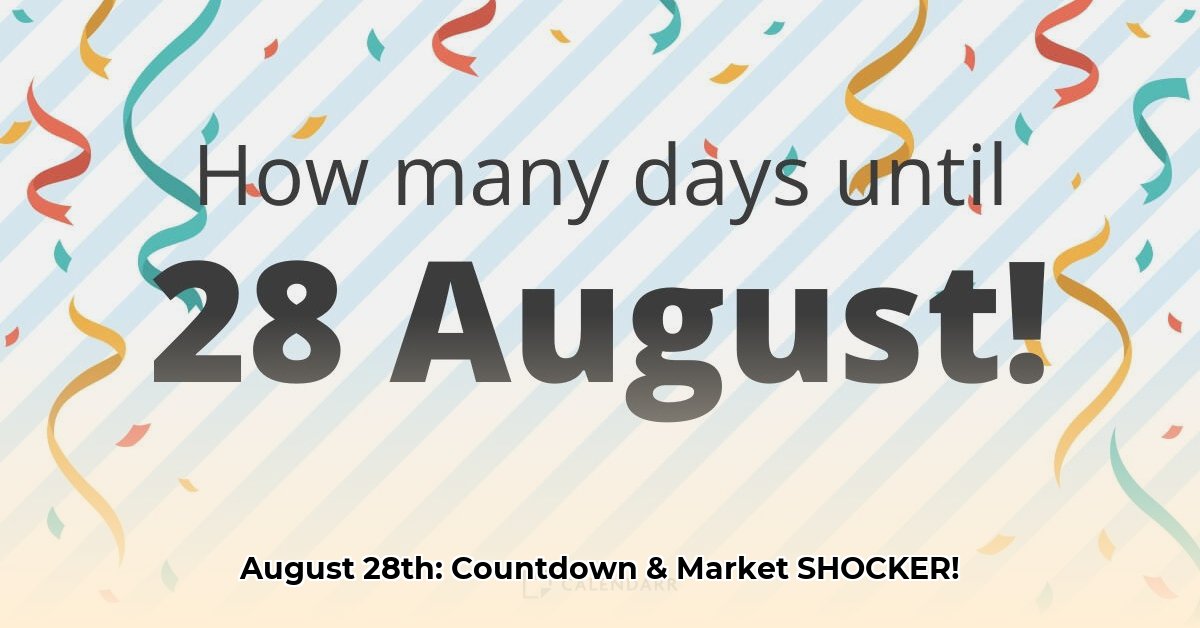This comprehensive guide explores the world of online countdown timers, delving into their technical aspects, user experience, market dynamics, and the exciting potential for future innovation. We’ll analyze the current landscape, address key challenges, and envision the future of these seemingly simple yet surprisingly complex digital tools, focusing on the countdown to August 28, 2025. For more examples of countdown calculations, check out this helpful resource.
Deconstructing the Countdown: Accuracy, Usability, and Market Dynamics
The core function of any countdown timer is to answer a simple question: “How many days, hours, minutes, and seconds until a specific date?” While seemingly straightforward, achieving consistent accuracy and a seamless user experience presents unique challenges. Let’s explore the current state of the countdown timer market:
The Accuracy Imperative: Time Zones and Synchronization
A critical issue facing countdown timers is maintaining accuracy across different time zones. Discrepancies arise due to variations in time zone offsets and daylight saving time transitions. This necessitates the adoption of a standardized time reference, such as Coordinated Universal Time (UTC), for internal calculations. Rigorous testing across various time zones, particularly during DST shifts, is crucial to ensure reliability and prevent inaccuracies. Advanced timers might even offer users the option to select their specific time zone for personalized accuracy.
Beyond the Basics: Untapped Potential and User-Centric Design
Current countdown timer services often provide basic functionality, focusing solely on displaying the remaining time. However, the potential for innovation is vast. Imagine countdown timers integrated with calendar applications, sending personalized reminders, syncing with project management software, or even triggering automated actions upon reaching zero. This untapped potential represents a significant opportunity to enhance productivity and user engagement.
The User Experience: Designing for Clarity and Engagement
Beyond mere functionality, the design of a countdown timer significantly impacts user experience. A clean, minimalist interface, intuitive controls, and clear visual displays are essential for user-friendliness. Consider incorporating features like customizable themes, adjustable font sizes, and progress visualizations to enhance engagement. A/B testing and continuous feedback from users are crucial for optimizing design and catering to diverse preferences.
Elevating the Countdown Experience: Innovation and Future Trends
The countdown timer market is ripe for disruption. By focusing on enhanced user experience, improved accuracy, and seamless integration with other applications, developers can transform these simple tools into powerful productivity aids.
Integration and Automation: Connecting Countdowns to Daily Life
Imagine a countdown timer seamlessly integrated with your project management software, automatically updating deadlines and sending notifications to team members. Or perhaps a timer linked to your smart home devices, triggering specific actions upon reaching zero, like turning on lights for an event or starting a coffee maker on a special morning. These integrations represent the future of countdown timers, weaving them into the fabric of our daily lives.
Personalization and Customization: Tailoring the Countdown Experience
The future of countdown timers lies in personalization. Users should be able to customize their countdown experience, choosing from various display formats, themes, and notification settings. Imagine creating custom alerts for milestones within a countdown, or integrating with social media platforms to share progress with friends and family.
Gamification and Interactive Elements: Making Countdowns Engaging
Introducing gamified elements could further enhance user engagement. Imagine earning badges for completing countdowns, competing with friends on countdown-related challenges, or even incorporating augmented reality features for interactive experiences. These additions can transform countdown timers from simple utilities into engaging and entertaining tools.
August 28, 2025 and Beyond: The Countdown Continues
The demand for tracking time until specific dates, like August 28, 2025, will only grow. Developers who embrace innovation, prioritize user experience, and address the challenges of accuracy and integration will shape the future of countdown timers. This evolution promises to deliver more sophisticated, personalized, and powerful tools that seamlessly integrate into our increasingly connected world.
- Master Crypto Trading: Sentiment Analysis Guide - June 24, 2025
- Master Crypto Fear & Greed Index Live: Smart Trading Guide - June 24, 2025
- Master Crypto Market Price Alerts: 2024’s Top Tools - June 24, 2025
















